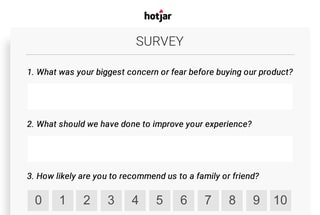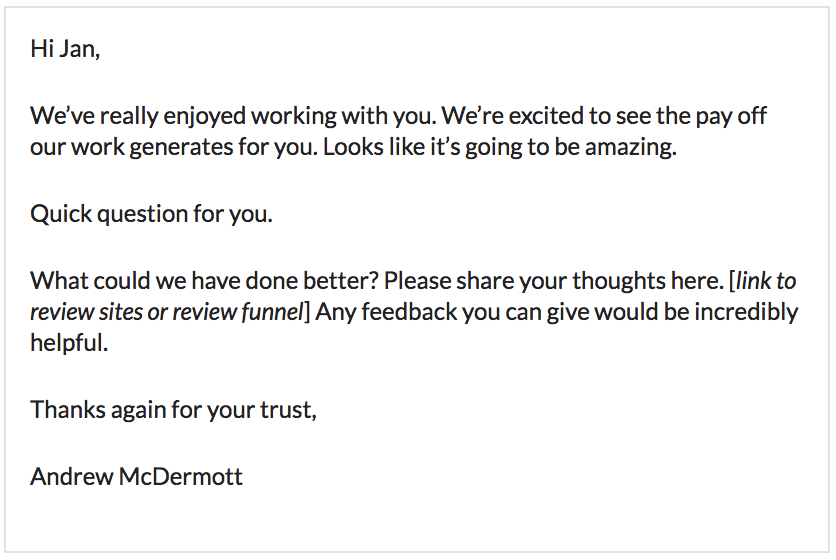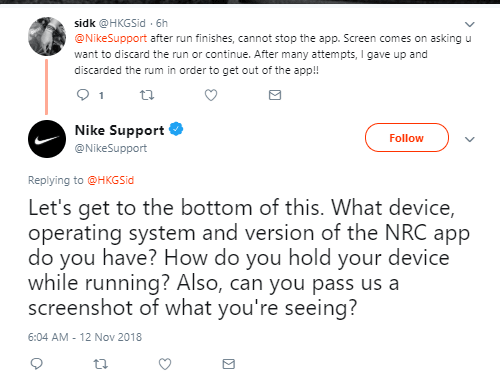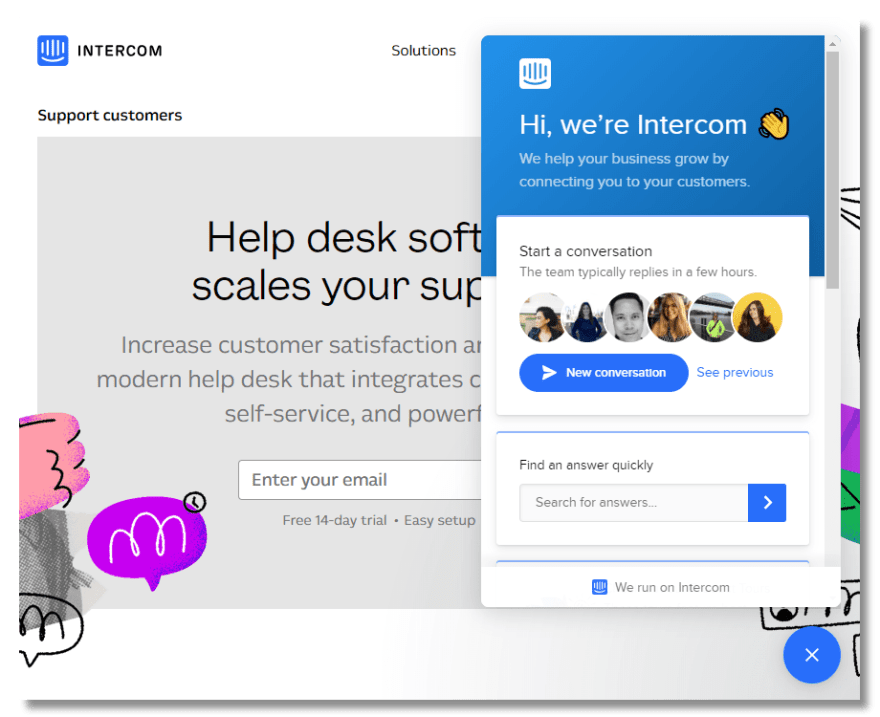Customer feedback is at the heart of building solid products. And you already know that, don't you?
The question is, how do you gather actionable feedback from customers? Especially when you’ve got several customers sharing feedback over multiple sources - live chat, helpdesks, and more!
In this article, we’ll cover:
- Why is customer feedback important?
- Ways to collect customer feedback
- How to ask for feedback from your customers?
- Organize All Your Customer Requests Under One Roof
Why is customer feedback important?
Customer is king.
Everybody would agree that this is the golden rule to a brand/product’s success because everything revolves around customer experience today.
Can you recollect the last time you used a product and weren’t asked to leave your feedback? Must be eons ago or most likely never.
That is because customer feedback aids in comprehending what a customer truly requires. It helps lower your churn.
But what does that really mean?
Here’s an image to help you understand.
In simple words, the above image shows that the lower your churn rate, the more customers you’ll retain and more revenue you’ll make during the same time period.
Thus, with the help of customer feedback, you can not only improve your product but also the bottom line, ie. revenue.
To achieve this, it’s essential to gather feedback from your customers consistently and derive insights from them.
Let’s find out what can be done with this feedback and how you can use it to build better products, shall we?
Ways to collect customer feedback
There are a plethora of ways to collect feedback from your customers. And each company follows its own modus operandi to get this feedback.
But if you’re unsure of where to begin, have a look at these 5 methods to collect feedback:
1. Survey
Surveys are a fantastic way to understand what your customers really think about your product.
They may take up a couple of minutes, depending on the length of the survey. But they provide a great deal of useful information about the customer’s wants, needs, and concerns.
But for surveys to work, you’ve got to ask the right questions to elicit the right responses. And also, bear in mind that an effective survey goes beyond simple yes or no questions.
Instead, it gets detailed information about a customer’s experience.
For example, having an online learning app product, you can ask questions similar to the following:
How could we have made your learning experience better?
How did the course help you learn about ?
Take a look at this survey example template by hotjar that asks customers who have bought its product a few questions to understand customer satisfaction.
We’ll have a look at what kind of questions to ask and who shortly.
2. One-on-one Interactions
What better way than personal emails and calls to get feedback from each customer?
I agree that not all customers would be welcoming to such reach-outs. And more often than not, you won’t get the response you’re looking for from them, owing to their busy schedules.
But in my opinion, it is a risk worth taking because a simple email/text/phone call will show your commitment to your customers. Thus, you will not only be able to build a real connection with them but also showcase your loyalty as a brand.
For example, let’s say that you reach out to one of your customers who you noticed hasn’t made progress in their course in a very long time. You can ask them through your interaction if they’re facing any trouble and if anything can be done from your end to help them overcome it.
Here’s what a great email requesting your customer to share feedback looks like.
3. Feedback Tools
Have you noticed tiny boxes in the corner of your screen while using a few apps or sites that say ‘Feedback’ or something along the lines of ‘How can we help make this app/site better for you?’
It’s a simple addition to your page but it is a quite powerful tool for receiving customer feedback.
Yes, having these small boxes in a corner of your product’s website or app is the quickest way to get your customer’s feedback. These feedback boxes can have simple radio buttons, rating options, or text boxes to receive a customer’s input.
For example, in a feedback box in your learning app, you can ask your customers to rate your product and leave their comments or you can get a bit creative and ask them:
How would you rate your learning experience with ?
- Love it!
- Can be improved
- This app sucks!
And then ask them to leave their feedback as comments in the comment box.
There’s another way to go about this: Using a feedback tool like Canny.
Canny enables all your customers to post their feedback, merge with existing feedback, upvote them, and thereby help your team prioritize feature requests and bugs.
4. Social Media
Who doesn’t use social media, right? All of us do. And we’re pretty active on it.
That’s what makes it a great platform to find customer complaints, suggestions, and feature requests. Because it is such a quick and straightforward way from a customer’s standpoint to just post their feedback - suggestions, issues, requests, and any opinions, on your social media pages.
And all you need to do is search for your product/brand name to find all related posts. You can then select the relevant ones by your customers and decide what course of action to take with regards to them.
You can choose to like, share, and even reply to positive feedback but don’t forget to respond to negative customer feedback. Because, as you know, retaining loyal customers is key to a successful product.
For example, have a look at this user whose Nike app was crashing. He raised this issue on Twitter and here’s how Nike’s support team responded.
This is a great example of solid customer service. Now, I’m sure sidk remains a loyal customer.
5. Live Chat & Support Tools
There are many popular live chat and support tools to instantly capture your customers’ experience and satisfaction with your product.
From these tools, you can view the customer feedback, analyze them, and plan what to do about them.
For example, you may find a live chat support icon at the bottom of many sites to assist customers. Here’s one such example of Intercom’s live chat tool.
You can reach out to the customer service representatives regarding any queries, provide feedback, or even make requests through this tool. You will typically get an automated response that lets you know when the customer service representative will get back to you.
Some of the widely-used live chat & support tools for capturing customer feedback are:
- Intercom - the messaging or live chat tool where your customers can not only provide feedback but also raise queries.
- Zendesk - a help desk (support) tool that pulls and displays all questions posted by various customers across different channels.
Thus, with the assistance of these tools, you can consolidate and pick out requests and address them to ensure that the features you build are customer-focused.
How to ask feedback from your customers?
- Asking the right questions to the right people
- Build a real connection
- Social Media interaction posts
1. Asking the right questions to the right people
When you ask questions, you find answers, and thus arrive at solutions. But asking the right question to the wrong person or vice versa will make this entire process lose its relevance.
For example, if it's a new customer you've been wanting to acquire feedback from, you can ask questions related to their first time experience of using your product. And then send a short feedback survey.
Here’s a tweet posted by NSRCEL, that I came across, containing some interesting insights on asking questions the right way:
But what difference does it make? Let’s break this tweet down to find out.
- When you ask “If we built this feature, would you be interested in using it?”, you are limiting the customer’s response to a yes or no. Whereas you get to know what the customer really needs help with if you ask the alternate question.
- "What tools do you use alongside our product?" and "What features should we add?" might appear to be one and the same but you'd be surprised to see how different the answers they elicit. - - The former question in contrast to the latter is a subtle way of helping you understand your customer's wants without coming across as desperate.
Apart from that, asking what tools they use shows your customers that you acknowledge that your product doesn't provide all the features they require. Instead, it shows your willingness to make it easier for them by trying to include as many as possible.
- Asking what your customer's workflow is like with your product displays your concern in their progress. Whereas asking them how your product is gives them an impression that you are worried about your product alone.
As much as asking the right questions to the right people matters, so does identifying the right type of customers to get genuine feedback.
And this genuineness requires building a real connection, which brings us to the next method of asking for feedback.
2. Building a real connection
Real connections begin by opening conversations.
At times, you may require striking up a conversation with your customer to truly understand their pain points and/or suggestions.
While trying to forge a bond with your customers, ensure that your emails, texts, calls, or other modes of communication are personalized. That is, address the customer by their name, do a bit of homework on their product usage, and then open a conversation.
For example, let’s say your product is an online learning app. And you wish to create a connection with a customer called Katie. You go through the user information provided by Katie herself during sign up and analyze Katie’s current progress in her course.
To do this analysis and track her progress, you can track her interactions with your app using live chat tools such as Intercom.
You can then reach out to her with very specific questions related to her progress. And check up on her to find out if she requires any assistance from your end.
Here’s a sneak peek into how Intercom helps track user activity.
3. Social Media interaction posts
Getting your customers to interact with you on your social media page can serve as a boon to not just acquire their feedback but to also garner attention and promote your product.
To make these interactions innovative and a whole lot of fun, there are quite a few social media features that you can use to your advantage to grab your customer’s attention and capture their input.
Some of the popular social media tactics to encourage customer interaction and thus receive feedback are:
- Posting open-ended questions to get feedback as comments
- Social media Polls to catch a glimpse of your customer’s opinion regarding your product or specific features
- Sharing the feedback survey form as social media posts
- Keeping an eye out for @mentions and your #tags to listen and collect feedback
For example, you can post a tweet with an open-ended question for your online learning app, asking your customers what challenges they are facing while learning a course.
Or you could strategically use the Polls option as Eventbrite has on its Twitter page to find out if their audience would go to a paid event if they hosted one.
But taking advantage of social media to get feedback comes with a responsibility - providing timely customer support online.
Here are a few tips to ensure that:
- Reply within 60 minutes of receiving a post on your feed.
- Acknowledge and respond to all kinds of user-generated content, be it questions, comments, or feedback.
- Remember to identify which posts need to be resolved publicly and which ones to resolve privately, and provide support accordingly.
- Always reply with positive comments to negative ones.
Organize All Your Customer Requests Under One Roof
Anybody who has been gathering customer feedback would agree that the real pain-point of this process lies in bringing all the collected customer requests together in one place.
We, at Zepel, can relate because we have also faced this issue. And that’s why we decided to build Streams.
With Streams, you can unify all your customer requests gathered across multiple sources like Canny, Intercom, and even via API in one place. Apart from requests from these sources, your team can also create internal requests to add their own suggestions and ideas to improve your product.
That’s not all. You can consolidate these requests, prioritize them, and delegate them to your squads in Zepel.
This way you can build features with context and align your squads with prioritized outcomes centered on your customers.
Turn customer requests into prioritized outcomes with Streams. Start a free, no strings attached trial.

















Oldest comments (1)
Great post! There lots of ways to collect customer feedback, from social listening, customer support to feedback tools. I'd like to share my experience of using such Customer Feedback Software useresponse.com/idea-management-so... , which allows me to organize open customer feedback community and create the product development roadmap.